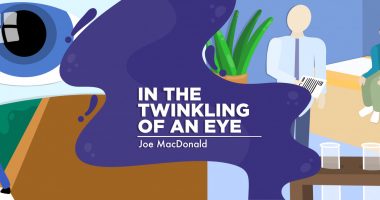We Must Recognize that Women Can Get Hemophilia

A genetic mutation for hemophilia has passed through five generations of my family. We can trace it from my great-grandfather, known simply as a “bleeder,” to my nephew. My great-grandfather passed the genetic mutation to my grandmother. My grandmother passed the genetic mutation to my father. My father passed the genetic mutation to me and my sister, who passed it along to her son.
Five generations of a genetic mutation.
It was no shock that I’ve had a grandfather, father, and nephew with hemophilia. It was a shock that I have it. For many years, it was believed that women do not get hemophilia, or any bleeding disorder for that matter. Now, doctors are learning that women do get bleeding disorders. This is very good news for women who have struggled for years to obtain relief from abnormal bleeding and were dismissed by the medical community. I was one of these women. I am far from being alone.
Hemophilia inheritance
Medical professionals long understood hemophilia to be an X-linked recessive disease. It makes sense that men would have hemophilia since they only have one X chromosome. Women have two X chromosomes, so it was believed the good X chromosome would compensate for the mutated X, and women would only get hemophilia if they received two mutated chromosomes — one from each parent.
Medical professionals did not understand a process called lyonization that randomly inactivates duplicate X chromosomes in utero. There is no guarantee the mutated chromosomes will turn off and the non-mutated chromosomes will remain turned on. My sister’s good X chromosome persisted — she is a carrier, but her factor VIII levels are normal. My lyonization process did not go well, so my factor VIII levels are low, giving me mild hemophilia. (Some women can present with moderate or severe hemophilia as a result of lyonization.)
Bleeding issues
Throughout my life, I struggled with bleeding, from non-scabbing cuts to ankle swelling during gym (joint bleeds) and heavy menstruation. We knew I carried the hemophilia mutation, but no one questioned whether it could be a cause of the bleeding issues. We believed strongly that only men could get hemophilia. I was 45 when I was officially diagnosed with mild hemophilia A, and 10 years prior, I was diagnosed as a “symptomatic carrier” of hemophilia (which can dangerously be confused with the term asymptomatic carrier), but with no treatment or plan.
A community of women
Recently, I was at a national hemophilia conference and had the opportunity to speak with many affected women. We had an alarming thread in common: Most women were diagnosed much later in life — in their 30s, 40s, 50s, and one in her 60s! All of these women had struggled for years with bleeding issues. Some had surgeries and almost died! Yet, when they approached medical professionals for assistance, their pleas fell on deaf ears. They were either not believed or thought to be exaggerating their bleeding issues (as reported by the women).
Last November, I attended the first National Conference for Women with Hemophilia, sponsored by the Hemophilia Foundation of Michigan. This nonprofit organization brought over 100 women from across the United States together with medical professionals to discuss the realities faced by women with hemophilia. Many of the women at the conference shared stories of late diagnosis — if diagnosed at all — and of treatment that differed from the standard treatment a man with similar factor levels would receive.
Same numbers, different treatment
I have experienced this difference in treatment. I know a man whose factor VIII levels are exactly 3 percentage points above mine. He was diagnosed with hemophilia as a child and has had access to proper care and a treatment plan since childhood. As he was a male with hemophilia in his family, and doctors understood since his birth that his bleeding issues were related to hemophilia. I have great treatment now, but my treatment plan wasn’t developed until I was in my 40s. If my factor levels had been properly tested at a young age, like his, I should have been able to access treatment earlier in life.
Future changes
The good news is healthcare professionals are learning more about hemophilia inheritance and that women can and do get hemophilia A and hemophilia B. They are also becoming more aware of the myriad additional bleeding disorders that affect men and women equally, such as Von Willebrand disease, platelet dysfunction, and other factor deficiencies. Additionally, women are sharing information about hemophilia to empower themselves to advocate for appropriate diagnosis and treatment. This is greatly changing the lives of women who have gone undiagnosed and untreated for years.
Thank you, Hemophilia News Today, for affording me the opportunity to share information and stories about women with hemophilia in this weekly column, “The Forgotten Factor.”
***
Note: Hemophilia News Today is strictly a news and information website about the disease. It does not provide medical advice, diagnosis, or treatment. This content is not intended to be a substitute for professional medical advice, diagnosis, or treatment. Always seek the advice of your physician or another qualified health provider with any questions you may have regarding a medical condition. Never disregard professional medical advice or delay in seeking it because of something you have read on this website. The opinions expressed in this column are not those of Hemophilia News Today or its parent company, BioNews Services, and are intended to spark discussion about issues pertaining to hemophilia.







Comments
Barb Forss
Thank you for this, Shellye Horowitz! I wasn’t diagnosed with severe FVIId until I was 47, 20 years ago. In that time, I’ve met hundred, if not thousands of women with bleeding disorders who had the same experience. I started a national organization for WWBDs called LadyBugs, and the educational programs and retreats it has evolved into, is now administered by Comprehensive Health Education Services. We strive to provide support for all, and we encourage everyone to become their own advocate, as well as enlightening others. There was a saying back in the 80’s: “You’ve come a long way, Baby”, and yes we have...but we aren’t there yet! Kudos to you, and keep fighting the good fight!! 😘🐞😘
Shellye Horowitz
Thank you so much for your kind words. We are all in this together. Thank you for all that you are doing to help spread the word that women get bleeding disorders too!
Carrie Recker
Fantastic!! Very well explained and excellent details to prove we are real, and we have hemophilia! I was diagnosed at 28 with Mild Hemophilia A. At one point my diagnosis changed to symptomatic carrier. It is back to hemophliac, now. We will persevere!! We will be heard!!
Milos Popadic
Thanks for the article. You have clearly explained the problem of hemophilia in women. I am a man, but I understand the severity of the suffering caused by hemophilia, because I have it myself.
Shellye Horowitz
Thanks - we do have a lot in common. I so appreciate all of our hemophilia community, men and women.